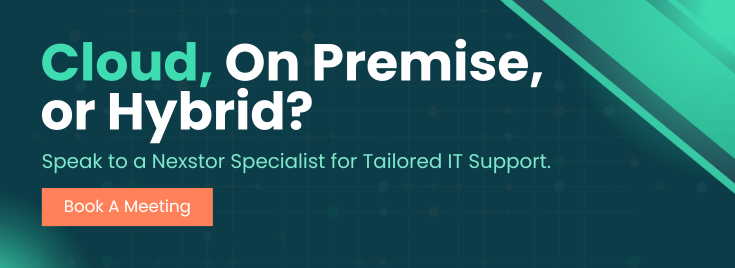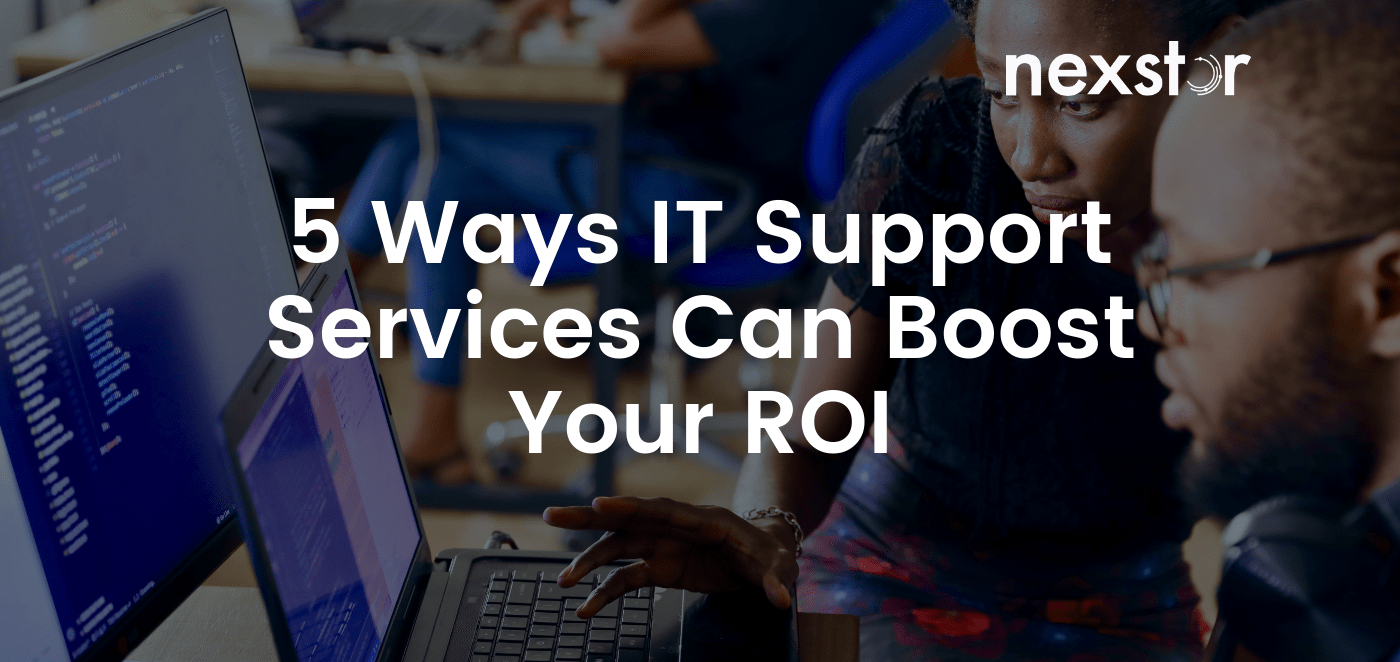In the guest blog below, originally written by John Gunther of HPE, we learn why turning to IT service partners offering multivendor support across the IT environment helps improve the efficiency of IT and allows companies to focus at driving new business.
There is an expectation for technological perfection in every aspect of our lives — raising the bar from the perspective of both customers and employees. Cloud computing, changes to the data centre, and the ubiquity/utility of data analytics has made keeping on top of your business’ IT demands a full-time job. Which is why nowadays using outside experts has become a critical asset for businesses tackling the complex challenges of an ever-expanding IT frontier.
You can find John’s full blog below, as well as a link to the original at the bottom.
When it comes to motor racing, every second counts. In the all-electric Formula E Championship series, for example, harness the latest technology to improve their efficiency and win more races.
Getting data from the car to the trackside engineers quickly is crucial because vital decisions—from accurately predicting battery energy levels to calculating the best time to make a pit stop—must be made in extremely narrow time frames. A few seconds saved here or there to collect and analyze data can make the difference in winning a race.
In motor racing, just as in business, smart and rapid technology management is key to success. But with technology evolving at a breakneck pace, it’s often hard for IT managers to keep up. And these days, running IT for an enterprise can be about as complex and stressful as competing in a Formula E road race.
Fortunately, there’s help. Organizations are increasingly turning to IT service partners that offer multivendor support across the entire IT environment. These arrangements typically help improve the efficiency of IT and optimize a company’s operations, freeing up staff to focus on the development of innovative technologies that can drive new business. Here are five areas where employing multivendor support can help you run your IT more effectively.

 Originally posted by John Gunther here: https://www.hpe.com/us/en/insights/articles/5-ways-it-support-services-can-boost-your-roi-1809.html
Originally posted by John Gunther here: https://www.hpe.com/us/en/insights/articles/5-ways-it-support-services-can-boost-your-roi-1809.html

1. Reducing complexity
Life was much simpler under the client-server computing model. Most computing networks were limited to desktop PCs and a handful of servers. IT managers dealt with just a handful of discrete parts and could troubleshoot each one separately and check the connections between them. Today’s hybrid IT environment has far more moving parts. In addition to the established PC and server network, we now have an explosion of remote IoT devices and external service providers offering business critical applications such as cloud storage, data analytics, or web conferencing, to name just a few. Hook together all these more complicated endpoints and the IT support challenge grows almost exponentially. IT managers now deal with multiple vendors of products and services, and they spend a lot of time navigating the connections between them all. New technologies offer benefits, of course—greater flexibility when creating new lines of business or the ability to improve the efficiency of existing processes—but they also bring challenges. They increase the complexity of IT management, and they make ongoing support and optimization of these technologies difficult, particularly for resource-strapped enterprises. Take, for example, a large enterprise telecommunications company. Its IT managers worry that critical IT issues are not resolved quickly enough and that the company is prone to unplanned downtime. While the company could spend time building up its IT department to meet these challenges, this approach is overly time-consuming and expensive.
Instead, the company works with an IT service partner that already understands and can support its multivendor environment. The partner provides 24/7 coverage, proactively detects and solves problems before they affect critical systems and disrupt business processes, adds other services as they are needed, and offers all its services under one contract.
This solution is likely money well spent. Research from IDC shows IT staff are already spending too much time on routine support tasks and not enough time on driving innovation to enable the organization to stand out in today’s competitive digital business environment. Making use of IT support services can lead to average productivity gains of $468,700 per organization, according to IDC. Indeed, our own research has found that many customers are ignoring their IT complexity until something goes wrong, by which time they are faced with a very costly business outage and scrambling to resolve it.
2. Establishing a single point of contact
It’s not uncommon for an IT department to have ongoing relationships with hundreds of vendors and service providers, and the number can increase for businesses engaged in ever-more complex technologies—extensive IoT deployments, for example, or companies that offer high-performance computing services. When things go wrong, as they inevitably do, vendors tend to engage in finger-pointing instead of helping you resolve your problem. This wastes valuable time and prolongs the amount of time your systems are down. It can also mean you incur the wrath of internal business customers that expect the best IT services in order to support business-critical processes. Finger-pointing occurs not because vendors are trying to duck an issue, but because they often truly believe the problem is not with their product. It’s similar to when your car breaks down and you take it to a mechanic who says the transmission is fine, and then to another who gives your engine a clean bill of health. Who do you believe? And do you keep taking your car to mechanic after mechanic until the issue is resolved? For a business, just one minute of unplanned downtime can cost thousands of dollars in lost revenue. If an outage persists for long enough, a company can take a significant financial hit. Wouldn’t it be simpler to have one point of contact? That is, an IT partner that offers comprehensive support across the entire IT environment, handles all your vendor relationships for you, and can diagnose a problem far more quickly, potentially reducing your downtime from days to minutes or sometimes eliminating it altogether by good detection techniques. That partner typically has the experience of working with multiple vendors, understands how they interact with each other, and is able to manage them for you in parallel. The partner will also have an established level of trust with your vendors and can bypass that initial screening call with the vendor’s helpline, saving you time and money.
3. Making your IT environment more efficient
Keeping up with the proliferation of new technology can be overwhelming, and it inevitably increases your administration and operations costs. It becomes all the more complicated when your business grows suddenly or you merge or acquire another company. For example, a company that is growing rapidly will inevitably find itself with a set of disparate IT divisions and legacy technologies and service contracts as it acquires new companies. To make its IT setup consistent and efficient and continue to innovate, that company will need to bring all those different divisions together. At the same time, it might want to move the whole enterprise to a more efficient hybrid cloud model. Many companies struggle to find time for innovation, let alone integrate outside IT divisions. That’s why many enterprises are partnering with service providers that have the resources, infrastructure, and deep understanding of IT to support your organization across all your IT platforms and various vendors. In doing so, your IT partner should be helping you to reduce your operational overhead, better align your IT organization with your business priorities, improve the agility of IT, and make the overall IT environment more efficient. Another advantage of working with a technology services partner that offers a comprehensive support experience is that the partner will not only support its own products, but also those of its competitors.4. Simplifying your contracts
Most companies deal with a plethora of IT architectures, vendors, and therefore, service contracts. Dealing with them all is, of course, complicated and time-consuming, especially when those providers are across multiple countries. And the resources you plow into this relatively mundane task takes resources away from developing IT projects that can be used to grow your business. Similar to having a single point of contact in support, which can significantly reduce the cross-vendor finger-pointing when problems occur, working with an IT partner gives you the ability to consolidate and simplify multiple contracts with dozens of vendors. Your partner will serve as a point of accountability. A vendor will establish a contract with you that details the responsiveness levels the company will achieve for your IT and then negotiate individual arrangements with the outside vendors. The idea is to even out the whole relationship and provide the customer with one contract. The IT partner deals with everything else, providing you with its expertise and established relationships with multiple vendors.5. Cutting overhead
Working with a third-party IT partner means you’re able to reduce your costs by taking advantage of economies of scale. Your partner will typically be dealing with hundreds of clients and have a long-standing expertise in IT management. This enables the partner to reduce the cost of the services it provides. Your partner will not only help consolidate, integrate, and enhance your IT operations, but also offer access to better deals from individual vendors, through a supply chain that can stretch globally. If the partner works with its suppliers regularly, there is a mutual understanding of how to operate, and that saves the customer the trouble and time involved in searching for the correct contact for a particular problem. And given the partner’s far larger network, it can often see a potential problem coming over the horizon and head it off, before it becomes too big to handle quickly.Gaining an IT advantage
The role of the IT department has evolved from one offering support to the enterprise to being a key driver of business growth. As enterprises move quickly to execute strategies for digital transformation, they need to be as efficient as possible, yet managing today’s complex hybrid IT environments can be challenging. Multivendor support can be useful for companies trying to grow and keep up with the rapid developments in technology. It can mitigate problems because you have a seasoned IT partner that manages your vendors for you and leverages years of IT expertise to get your systems running smoothly, reducing complexity and improving efficiency.

